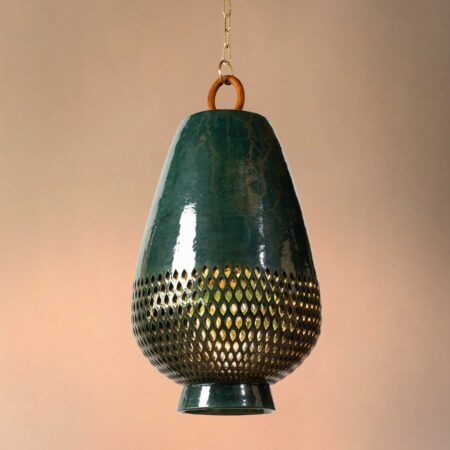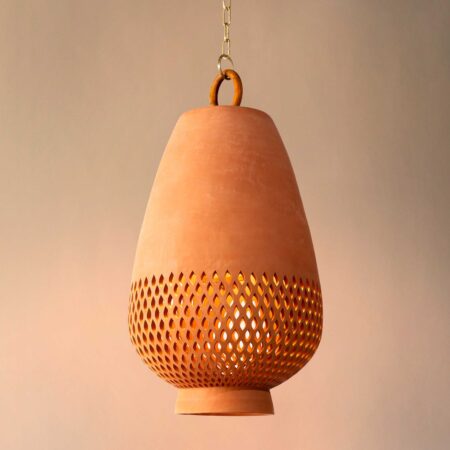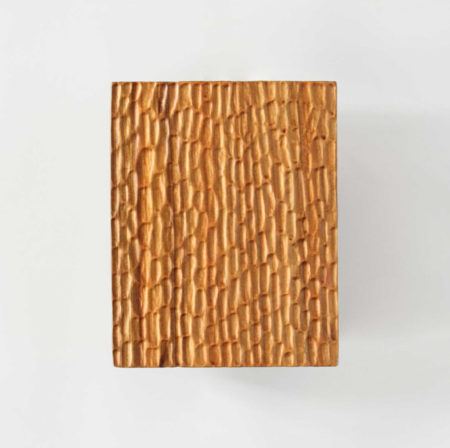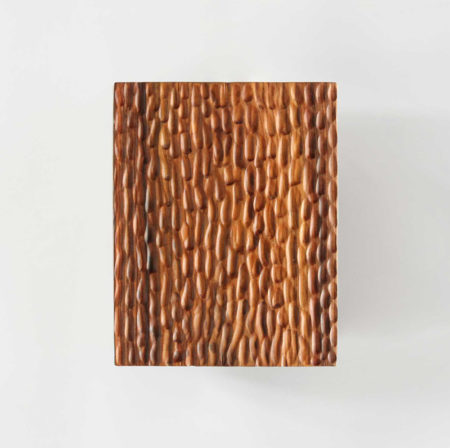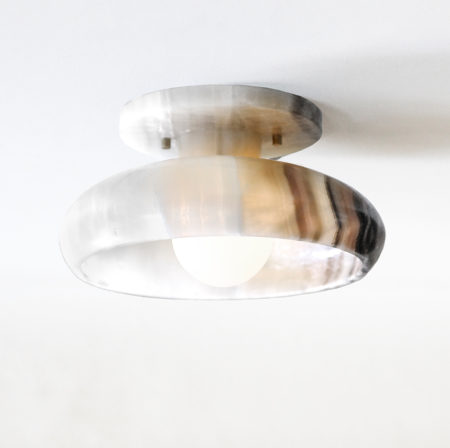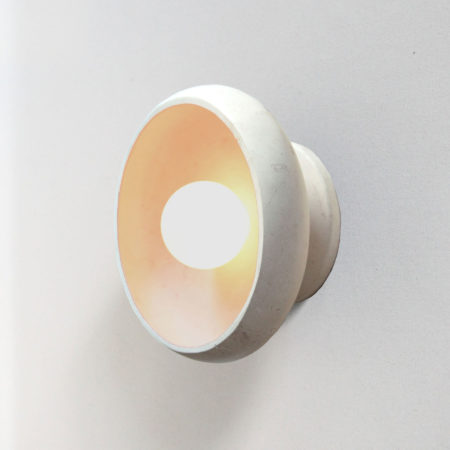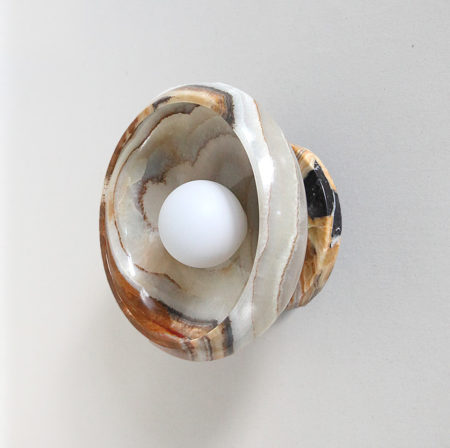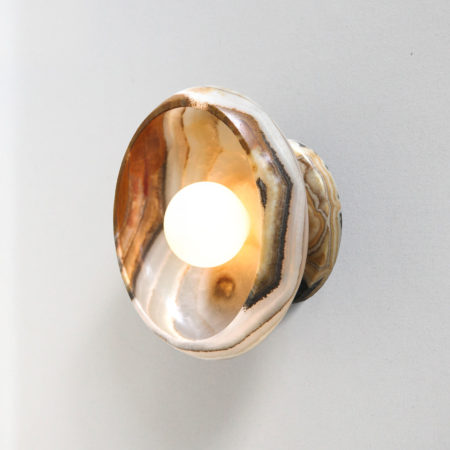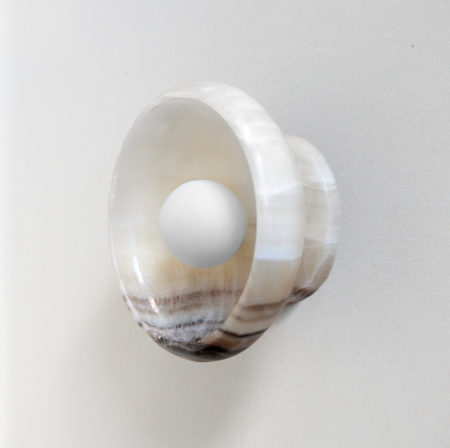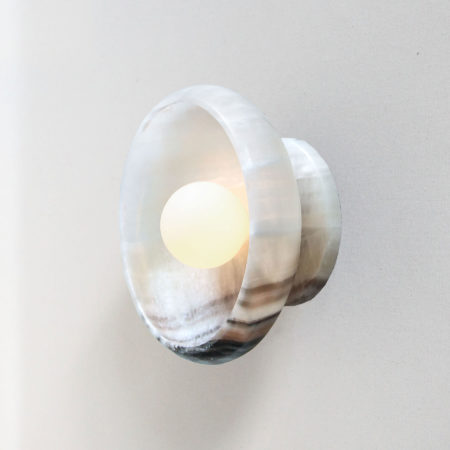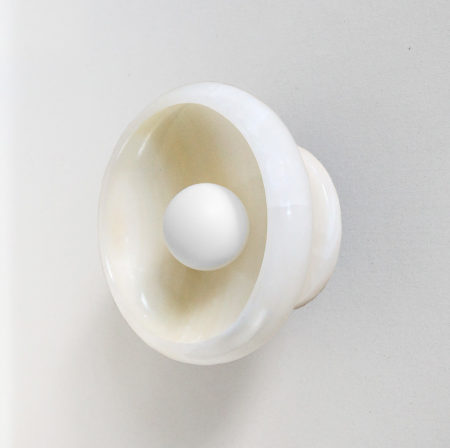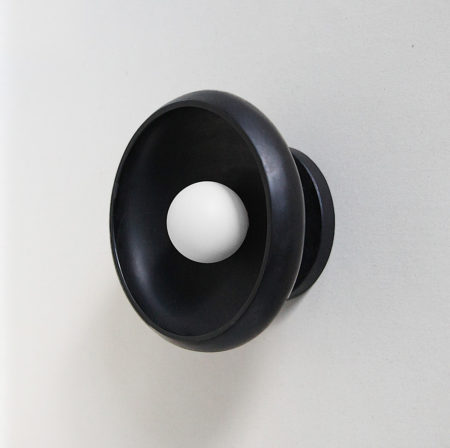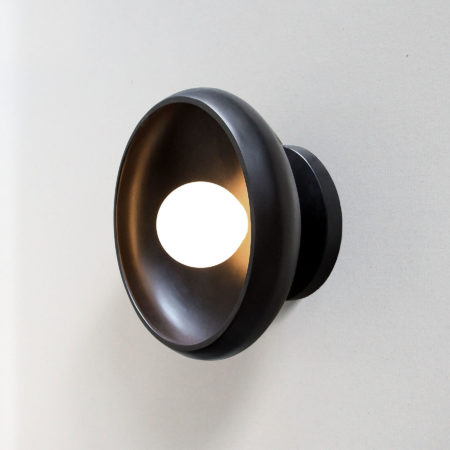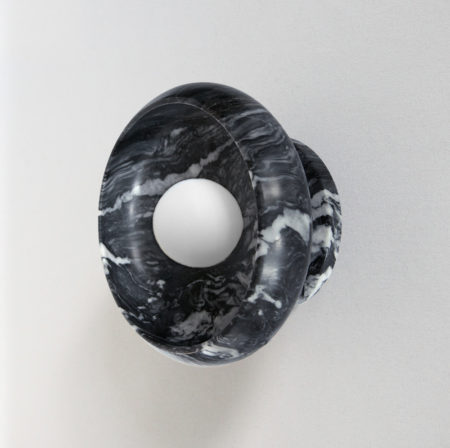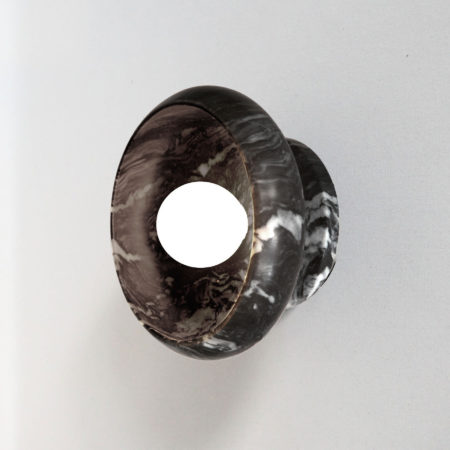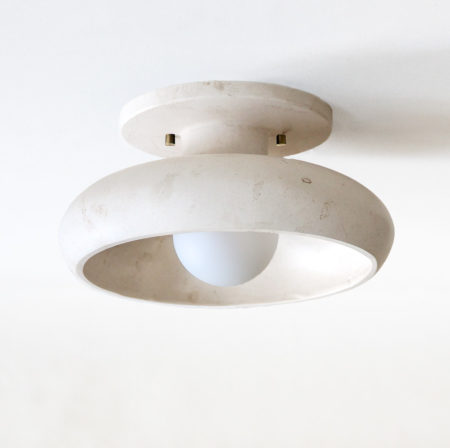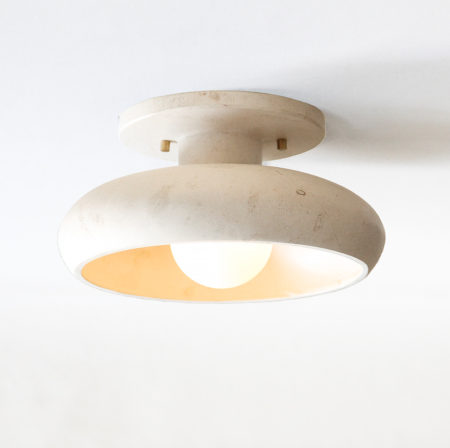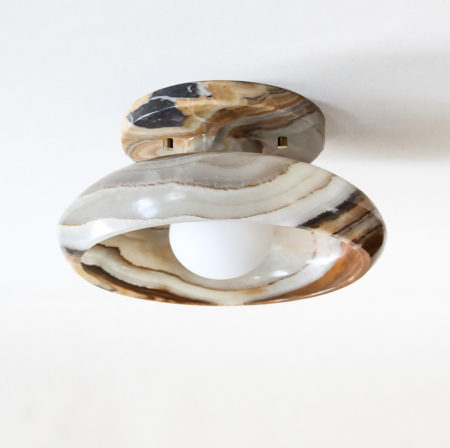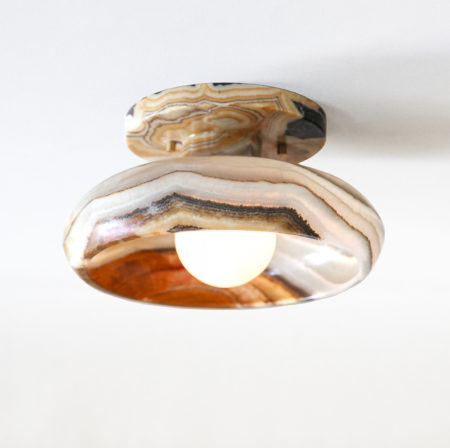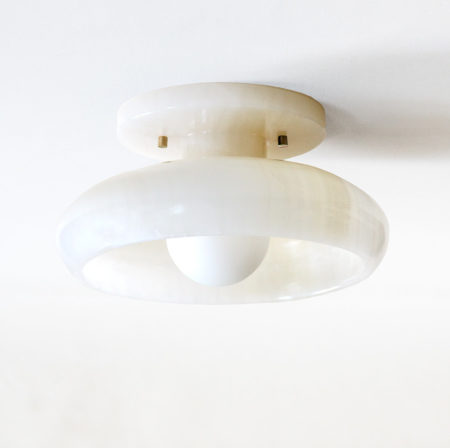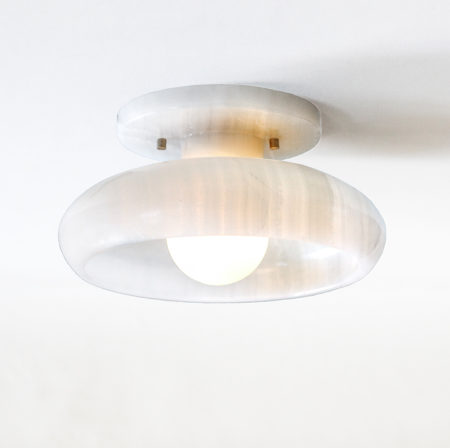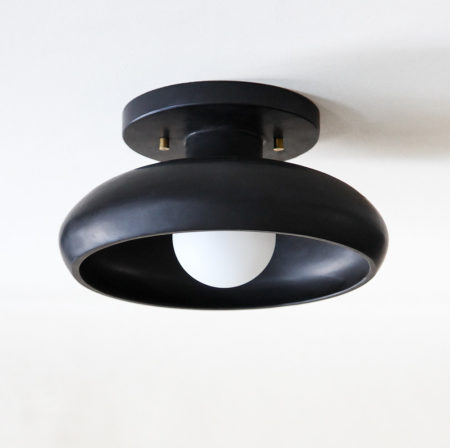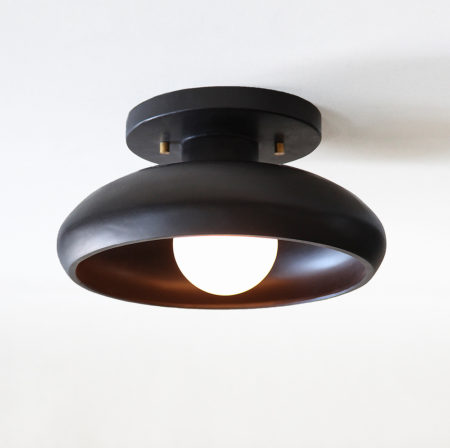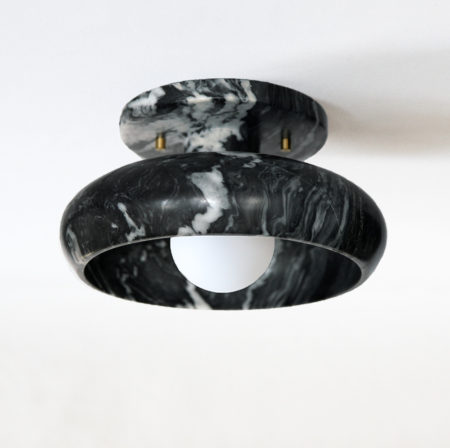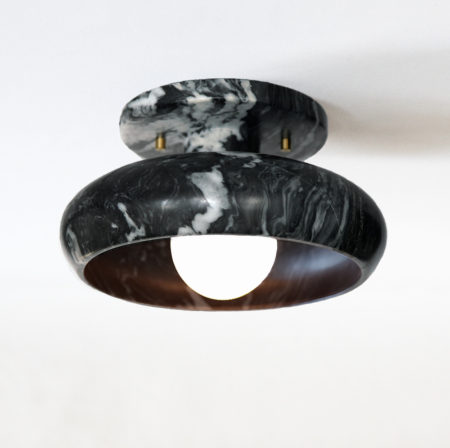modern light fixtures
99 Products
Active Filters
Filter by Category
Filter by Price
Min Price:
Max Price:
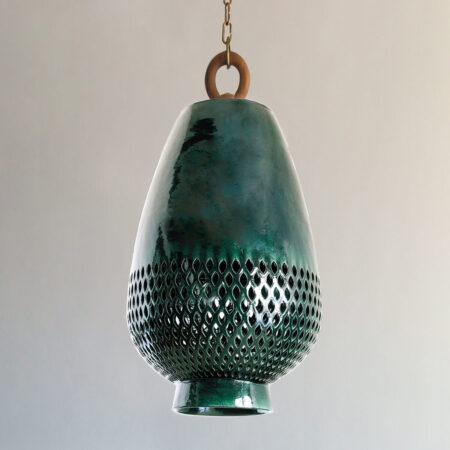

Atzompa Collection
Diamantes Pendant Light, Size D$4,250.00 – $4,350.00Our Atzompa Collection is created in the Oaxacan town of Santa María Atzompa, where the pottery-making tradition has roots tracing back to ancient Zapotec culture.
Building on this tradition, we formed a partnership with master artisan Eligio Zarate, whose family has for generations worked to bring innovation to this centuries-old craft.
Using a red clay that comes from local mountains, the pendant lights in this collection are first given form within custom gesso molds. Emerging from the molds, the repeating openwork designs—which play on motifs that are carved in to the stone at Mitla, the neighboring archeological ruins—are meticulously cut out one by one. Each piece is then treated with a finish before entering into a final kiln firing.
Leadtime 8-10 weeks.
SPEC SHEET
3D MODEL—White-Washed Finish
3D MODEL—Esmalte Verde Finish
3D MODEL—Terracotta Finish
INSTALL INSTRUCTIONSPlease contact us for a shipping quote and/or to purchase.
REQUEST A QUOTE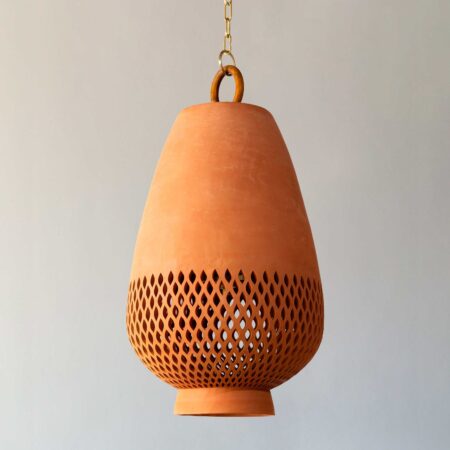

Atzompa Collection
Diamantes Pendant Light, Size D$4,250.00 – $4,350.00Our Atzompa Collection is created in the Oaxacan town of Santa María Atzompa, where the pottery-making tradition has roots tracing back to ancient Zapotec culture.
Building on this tradition, we formed a partnership with master artisan Eligio Zarate, whose family has for generations worked to bring innovation to this centuries-old craft.
Using a red clay that comes from local mountains, the pendant lights in this collection are first given form within custom gesso molds. Emerging from the molds, the repeating openwork designs—which play on motifs that are carved in to the stone at Mitla, the neighboring archeological ruins—are meticulously cut out one by one. Each piece is then treated with a finish before entering into a final kiln firing.
Leadtime 8-10 weeks.
SPEC SHEET
3D MODEL—White-Washed Finish
3D MODEL—Esmalte Verde Finish
3D MODEL—Terracotta Finish
INSTALL INSTRUCTIONSPlease contact us for a shipping quote and/or to purchase.
REQUEST A QUOTE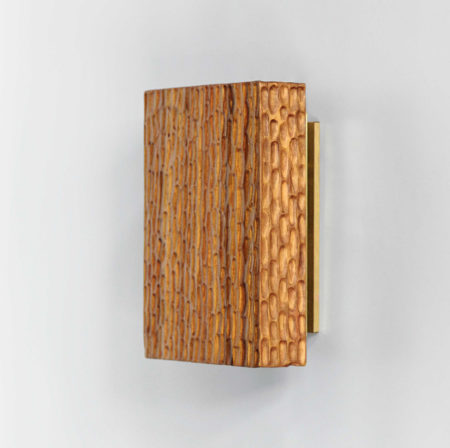
 $1,965.00
$1,965.00Formed from a sustainably harvested and certified local tropical hardwoods, the face of each sconce is meticulously chiseled to create a pattern of striking undulations. The wood blocks are backed with polished brass for textural contrast—enhancing the way the light casts from both the base and peak of the fixture.
Leadtime 8-10 weeks.
SPEC SHEET
INSTALL INSTRUCTIONS
3D MODEL–MARTILLADO SCONCEREQUEST A QUOTE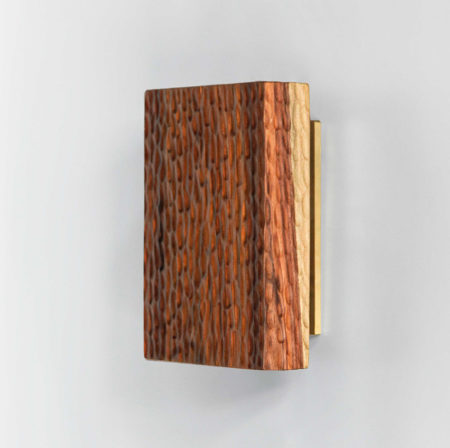
 $1,965.00
$1,965.00Formed from a sustainably harvested and certified local tropical hardwoods, the face of each sconce is meticulously chiseled to create a pattern of striking undulations. The wood blocks are backed with polished brass for textural contrast—enhancing the way the light casts from both the base and peak of the fixture.
Leadtime 8-10 weeks.
SPEC SHEET
INSTALL INSTRUCTIONS
3D MODEL–MARTILLADO SCONCEREQUEST A QUOTE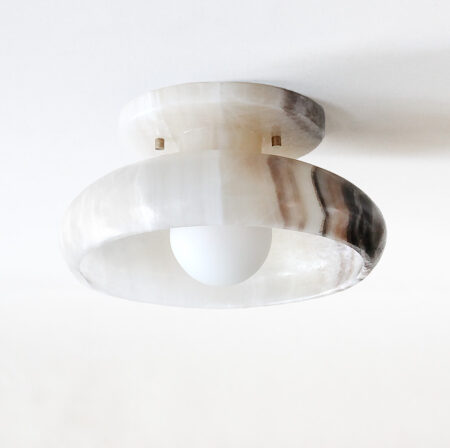

Piedra Collection
Black + White Onyx Semi Flush$2,375.00Our Piedra lighting takes its inspiration from the stone masks of the ancient civilization of Teotihuacán. Carved in the Mexican city of Tecali — which means ‘stone house’ in Nahuatl — these wall sconces and semi-flush mount lights draw on the clean lines, defined angles, and streamlined silhouettes that epitomize the pre-Colombian stone masks. Sculpted from carefully chosen marble or onyx, each piece reflects the unique character of the individual stone from which it is formed.
Leadtime 4-6 weeks.
SPEC SHEET
INSTALL INSTRUCTIONS
3D MODEL–PIEDRA SCONCEREQUEST A QUOTE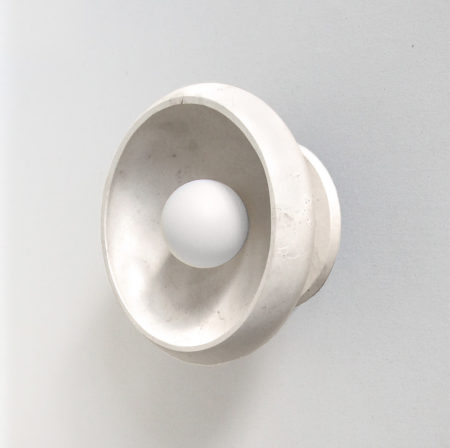
 $2,375.00
$2,375.00Our Piedra lighting takes its inspiration from the stone masks of the ancient civilization of Teotihuacán. Carved in the Mexican city of Tecali — which means ‘stone house’ in Nahuatl — these wall sconces and semi-flush mount lights draw on the clean lines, defined angles, and streamlined silhouettes that epitomize the pre-Colombian stone masks. Sculpted from carefully chosen marble or onyx, each piece reflects the unique character of the individual stone from which it is formed.
Leadtime 4-6 weeks.
SPEC SHEET
INSTALL INSTRUCTIONS
3D MODEL–PIEDRA SCONCEREQUEST A QUOTE
 $2,375.00
$2,375.00Our Piedra lighting takes its inspiration from the stone masks of the ancient civilization of Teotihuacán. Carved in the Mexican city of Tecali — which means ‘stone house’ in Nahuatl — these wall sconces and semi-flush mount lights draw on the clean lines, defined angles, and streamlined silhouettes that epitomize the pre-Colombian stone masks. Sculpted from carefully chosen marble or onyx, each piece reflects the unique character of the individual stone from which it is formed.
Leadtime 4-6 weeks.
SPEC SHEET
INSTALL INSTRUCTIONS
3D MODEL–PIEDRA SCONCEREQUEST A QUOTE
 $2,375.00
$2,375.00Our Piedra lighting takes its inspiration from the stone masks of the ancient civilization of Teotihuacán. Carved in the Mexican city of Tecali — which means ‘stone house’ in Nahuatl — these wall sconces and semi-flush mount lights draw on the clean lines, defined angles, and streamlined silhouettes that epitomize the pre-Colombian stone masks. Sculpted from carefully chosen marble or onyx, each piece reflects the unique character of the individual stone from which it is formed.
Leadtime 4-6 weeks.
SPEC SHEET
INSTALL INSTRUCTIONS
3D MODEL–PIEDRA SCONCEREQUEST A QUOTE
 $2,375.00
$2,375.00Our Piedra lighting takes its inspiration from the stone masks of the ancient civilization of Teotihuacán. Carved in the Mexican city of Tecali — which means ‘stone house’ in Nahuatl — these wall sconces and semi-flush mount lights draw on the clean lines, defined angles, and streamlined silhouettes that epitomize the pre-Colombian stone masks. Sculpted from carefully chosen marble or onyx, each piece reflects the unique character of the individual stone from which it is formed.
Leadtime 4-6 weeks.
SPEC SHEET
INSTALL INSTRUCTIONS
3D MODEL–PIEDRA SCONCEREQUEST A QUOTE
 $2,375.00
$2,375.00Our Piedra lighting takes its inspiration from the stone masks of the ancient civilization of Teotihuacán. Carved in the Mexican city of Tecali — which means ‘stone house’ in Nahuatl — these wall sconces and semi-flush mount lights draw on the clean lines, defined angles, and streamlined silhouettes that epitomize the pre-Colombian stone masks. Sculpted from carefully chosen marble or onyx, each piece reflects the unique character of the individual stone from which it is formed.
Leadtime 4-6 weeks.
SPEC SHEET
INSTALL INSTRUCTIONS
3D MODEL–PIEDRA SCONCEREQUEST A QUOTE
 $2,375.00
$2,375.00Our Piedra lighting takes its inspiration from the stone masks of the ancient civilization of Teotihuacán. Carved in the Mexican city of Tecali — which means ‘stone house’ in Nahuatl — these wall sconces and semi-flush mount lights draw on the clean lines, defined angles, and streamlined silhouettes that epitomize the pre-Colombian stone masks. Sculpted from carefully chosen marble or onyx, each piece reflects the unique character of the individual stone from which it is formed.
Leadtime 4-6 weeks.
SPEC SHEET
INSTALL INSTRUCTIONS
3D MODEL–PIEDRA SCONCEREQUEST A QUOTE

Piedra Collection
Semi Flush$2,375.00Our Piedra lighting takes its inspiration from the stone masks of the ancient civilization of Teotihuacán. Carved in the Mexican city of Tecali — which means ‘stone house’ in Nahuatl — these wall sconces and semi-flush mount lights draw on the clean lines, defined angles, and streamlined silhouettes that epitomize the pre-Colombian stone masks. Sculpted from carefully chosen marble or onyx, each piece reflects the unique character of the individual stone from which it is formed.
Leadtime 4-6 weeks.
SPEC SHEET
INSTALL INSTRUCTIONS
3D MODEL–PIEDRA SCONCEREQUEST A QUOTE

Piedra Collection
Semi Flush$2,375.00Our Piedra lighting takes its inspiration from the stone masks of the ancient civilization of Teotihuacán. Carved in the Mexican city of Tecali — which means ‘stone house’ in Nahuatl — these wall sconces and semi-flush mount lights draw on the clean lines, defined angles, and streamlined silhouettes that epitomize the pre-Colombian stone masks. Sculpted from carefully chosen marble or onyx, each piece reflects the unique character of the individual stone from which it is formed.
Leadtime 4-6 weeks.
SPEC SHEET
INSTALL INSTRUCTIONS
3D MODEL–PIEDRA SCONCEREQUEST A QUOTE

Piedra Collection
Semi Flush$2,375.00Our Piedra lighting takes its inspiration from the stone masks of the ancient civilization of Teotihuacán. Carved in the Mexican city of Tecali — which means ‘stone house’ in Nahuatl — these wall sconces and semi-flush mount lights draw on the clean lines, defined angles, and streamlined silhouettes that epitomize the pre-Colombian stone masks. Sculpted from carefully chosen marble or onyx, each piece reflects the unique character of the individual stone from which it is formed.
Leadtime 4-6 weeks.
SPEC SHEET
INSTALL INSTRUCTIONS
3D MODEL–PIEDRA SCONCEREQUEST A QUOTE

Piedra Collection
Semi Flush$2,375.00Our Piedra lighting takes its inspiration from the stone masks of the ancient civilization of Teotihuacán. Carved in the Mexican city of Tecali — which means ‘stone house’ in Nahuatl — these wall sconces and semi-flush mount lights draw on the clean lines, defined angles, and streamlined silhouettes that epitomize the pre-Colombian stone masks. Sculpted from carefully chosen marble or onyx, each piece reflects the unique character of the individual stone from which it is formed.
Leadtime 4-6 weeks.
SPEC SHEET
INSTALL INSTRUCTIONS
3D MODEL–PIEDRA SCONCEREQUEST A QUOTE

Piedra Collection
Semi Flush$2,375.00Our Piedra lighting takes its inspiration from the stone masks of the ancient civilization of Teotihuacán. Carved in the Mexican city of Tecali — which means ‘stone house’ in Nahuatl — these wall sconces and semi-flush mount lights draw on the clean lines, defined angles, and streamlined silhouettes that epitomize the pre-Colombian stone masks. Sculpted from carefully chosen marble or onyx, each piece reflects the unique character of the individual stone from which it is formed.
Leadtime 4-6 weeks.
SPEC SHEET
INSTALL INSTRUCTIONS
3D MODEL–PIEDRA SCONCEREQUEST A QUOTE

